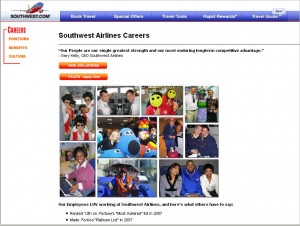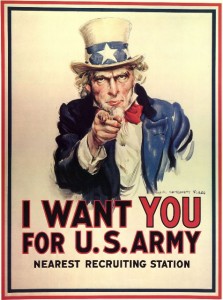Conventional wisdom says: Employee referral programs are an excellent source of high-quality, low-cost hires.
Leigh Buchanan says: Not so fast there, buckaroo.
Or words to that effect. The funny and insightful Buchanan, an editor-at-large for Inc., asks a good question in the March issue: Is Your Company Inbred?
And though she acknowledges the advantages of employee referrals, she also points out that:
This particular concern is probably more of a danger for small to mid-size companies than for giant corporations. But it might actually be most hazardous in specialized departments of large companies, where cliqueishness can take root easily. And there are other potential issues as well, so it’s worth taking a look at both sides of the referral coin.
Employee referral programs have the power to create “virtuous circles,” where well-chosen employees provide links to other good employees, and the effect builds. Ideally, the circle develops and sustains itself because . . .
- Employees won’t risk their own reputations by referring people who don’t fit the company or job.
- Referred applicants already have knowledge of the company from their referring friend, so they have positive (or at least realistic) expectations.
- People who already know and like each other have an enhanced chance of working together well.
- Referrals often produce passive candidates who would otherwise be hard to find.
- Referring employees have an investment in the success of their referees.
Case in point: I spent a year on contract at Southwest Airlines (and yes, it’s a ton of fun there), which is perhaps the poster company for employee referral. Indeed, getting your resume read at SWA can be about like getting your toddler into a top-tier nursery school: you just have to know somebody!
To get a feel for the virtuous circle effect at SWA, look at their Careers landing page (which is conveniently reproduced at the top of this post). The prominent visual of happy people serves the purpose of attracting applicants, but it also sends signal that Southwest is looking for people who will be happy. The happy factor is established as a key driver for hiring—and every single page on the site builds that message.
Happy people want their friends to be happy too! And companies (like SWA) that actively look for sociable employees get an automatic advantage, since sociable people tend to know lots of other sociable people, so the effect expands. Many of the companies on the Fortune list of 100 Best Companies to Work For have harnessed the power of happy to build their own ranks through employee referrals.
But the potential also exists for employee referrals to create vicious circles, in which employees manipulate harried hiring managers in order to build their own little fiefdoms, populated with people that agree with them or will at least go along with them. (Sounds harsh, but harsh happens.) And since happy-ness is not a key reality at every company, employee referrals may sometimes be driven more by incentives than by team spirit. In addition, employee referral programs are increasingly exploited by external systems—but that’s another post.
At the bottom line, though, employee referrals are usually very cost-effective, yielding the best cost-of-hire of any method. So check out John Sullivan’s list of reasons why referral programs fail (sort of best practices in reverse), and take a look at a few Careers sites that do a nice job of promoting employee referral programs:
For further reading, there’s an interesting white paper on employee referrals, plus a LOT of links, at The Corporate Recruiters Blog.


